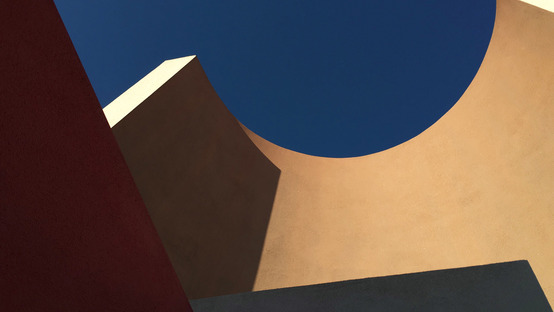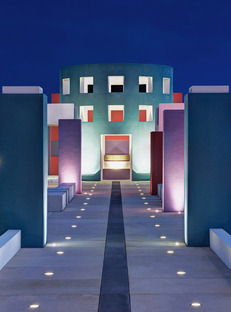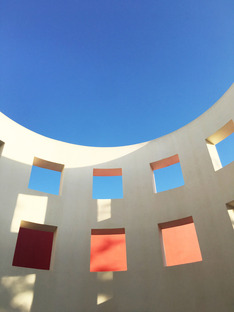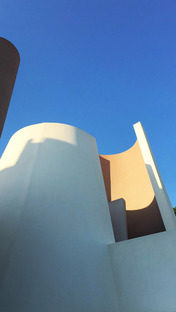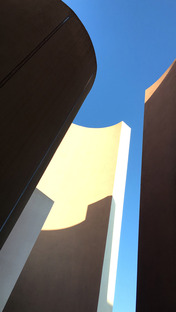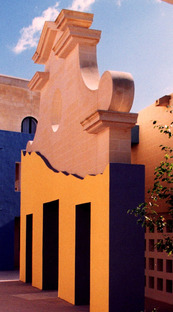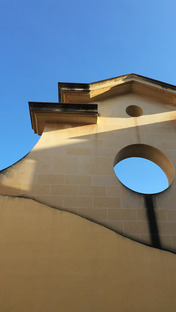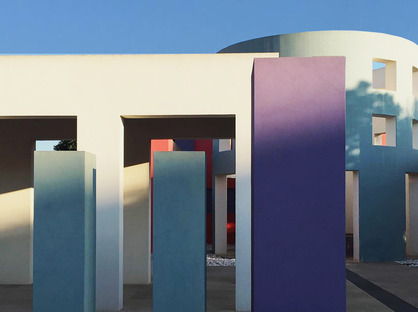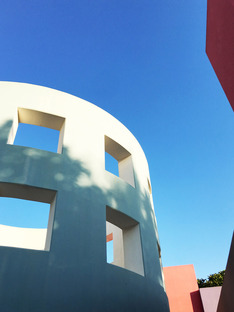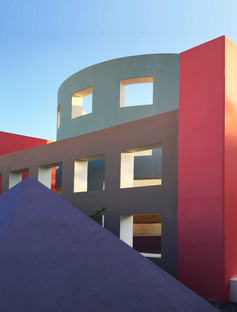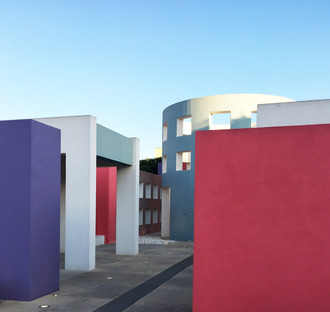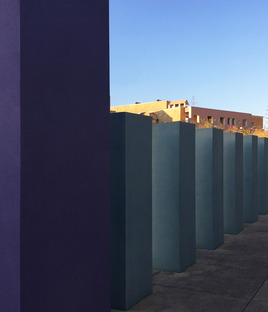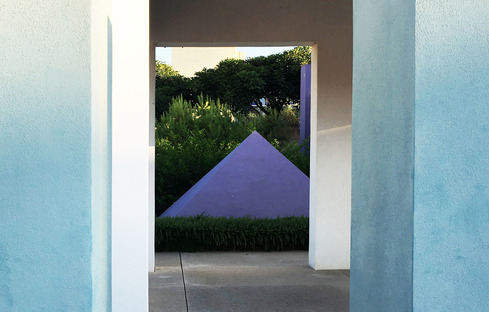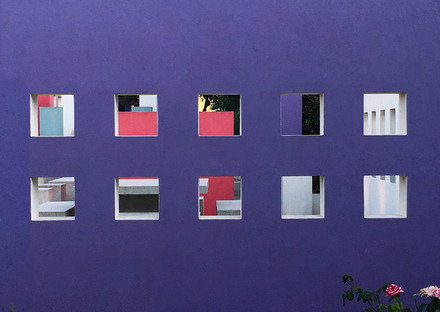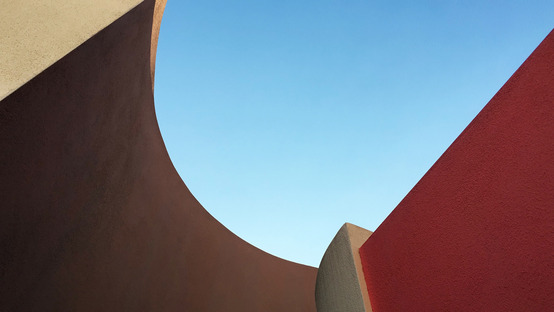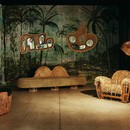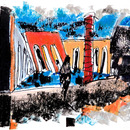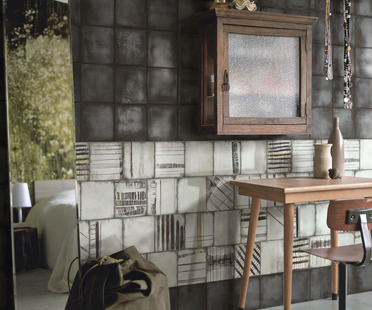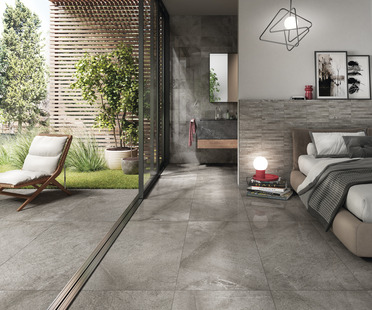24-09-2019
ONSTAGE: INTERVIEW WITH RICHARD ENGLAND Part 2
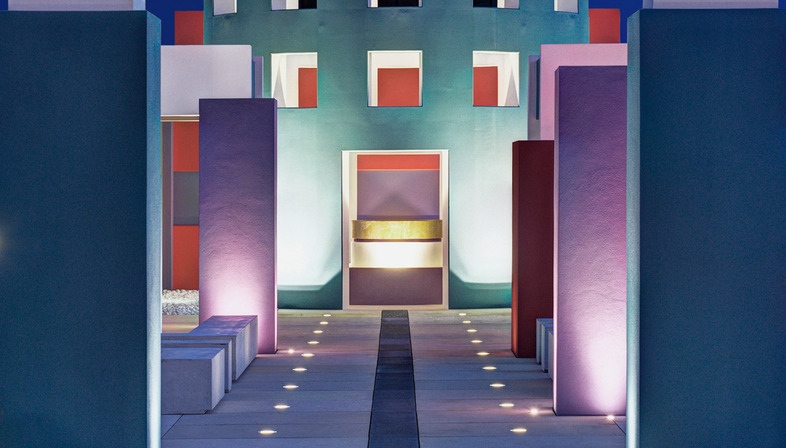
SILENCE IN PAINTING
“Painting is silent poetry”—Plutarch
Silences in painting are manifested in blank or one colour canvasses. The first recorded blank image comes from 1617 and appears as a completely black illustration indicating darkness in a book by the occult philosopher, cabbalist, physician Robert Fludd. Possibly the most famous blank canvas remains that painted by the Russian Suprematist artist Kazimir Malevich in 1918. The painting portrays a white square laid over on an inclined warmer tone square background. Even before this white on white canvas Malevich had earlier in 1915 painted an entirely black canvas entitled ‘black square’. Malevich’s philosophy was to quell representation in art and substitute it by intellectual discourse and debate.
However it was in the Abstract Expression movement of the 1950’s that blank canvas paintings proliferated in the works of a number of artists whose paintings were no longer about anything but solely about themselves. Artists who produced blank canvases at that time included the previously mentioned
Robert Rauschenberg who in 1951 exhibited a two panel work completely painted in white. According to the artist this was a visual work which paralleled John Cage’s aural 4’33”. The painting as in Cage’s work was influenced by its ambient atmosphere; its shadows, light and dust. The painting itself according to the artist was not static but dynamic; having no control in itself but dependent entirely on its surroundings. Rauschenberg believed that the ambience in which the painting was hung was the determining factor which contributed to what he referred to as the “dynamism” of the work.
Yves Klein was another artist who produced a large series of blank ‘Klein blue’ paintings influenced by his interest in various religious philosophies and the writings of Gaston Bachelard, especially the words from the French philosopher’s book Air and Dreams; “First there is nothing, then there is a depth of nothingness, then a profundity of blue”. Klein claimed that “blue has no dimension, it is beyond dimension”. In a way his paintings were a visual dichotomy of being and non-being. More than many of the other artists of the 1950s working in this genre, Klein’s work, which also included poetry and musical composition, related more to the spiritual and transcendental than to materiality.
Ad Reinhardt, like Rauschenberg, was also an Abstract Expressionist who painted only black canvases. He considered these as “pure, abstract, non-objective and timeless”, paintings which eliminated previous theories that a painting had to mean something. Other artists who produced monochrome blank canvases included Frank Stella, the earlier Russian Constructivist Alexander Rodchenko, Barnett Newman and Mark Rothko.
All of these artists ultimately believed in what Igor Stravinsky had said about music. “Music is powerless to express anything but itself”, Frank Stella translated this to the realm of painting when he stated that “what you see is what you see”. Ultimately these monochromatic blank canvasses may be viewed as attempts to communicate calmness, tranquillity and serenity; visual representations of emptiness which yet conveyed fullness. In all of these works the artists were attempting to free art from figurative representation so that the observer could focus solely on the painting itself and not be distracted by representational images. In contrast to musical aural minimization these canvases introduced their observers to visual minimization. In both cases elimination proved that less can indeed be more.
THE SILENCE OF ARCHITECTURE
“The silence of architecture is a responsive remembering silence”—Juhani Pallasmaa
In the design process of an architectural project two elements form the very kernel of the future manifest building; the clients brief, and the properties and qualities of the site and its surrounding context. In order to fully understand the requirements and contents of the former and the vibrations of the latter the architect must listen carefully in order to fully comprehend the contents of the brief and the properties of the site. It is here that the architect needs moments of stillness and silence as these are the source and catalyst for a full understanding and they form the threshold and doorway to the next step of the creation of a concept design. A full comprehension of the brief is essential as architecture is finally a solution to a particular problem, for architecture remains first and foremost a servient art. To fully understand the requirements of the client’s brief the architect must listen and in silence absorb the demands and requirements laid out. The importance of a well written and well defined brief is paramount. It is only by knowing the restrictions and limitations imposed, that the architect can understand his parameters and liberty of activity. “Listen to the voices of the site, they will tell you what the site wants to become”. Comprehension and understanding of the site and its genius loci are essential for the whole design process. The context within which a building is placed is as influential as the requirements of the building brief itself. In silence the architect must utilise all his senses to touch the ground, listen to the wind, smell the aroma, breathe the air and sense the poetics of the site. Only then will the site let him/her know what it wants to become.
In ancient times when architects were magicians, shamans, alchemists and high priests it seemed that they had a more potent affinity with the land, its energy lines and geographical and astronomical alignments, for that was an age when land and sky had more meaning. The reading of the site, its silent voices and physical properties were absorbed and provided the guidelines for the making of buildings. Perhaps it was the silence of the era which was more conducive to hearing and understanding the voices of a site. Those were the days when architecture was still a road to enchantment and man built in harmony with nature. Perhaps it is worth considering that although we still have much to learn we perhaps have more to remember.
Having studied the climate, the rain, the wind, the lights and shadows which fall on the site and having also observed and evaluated the mnemonic baggage and geography and topography of the land on which the architect is building it is worth remembering the words of Jorge Luis Borges that “it is more important to feel a place than to see it”. In other words it is how the geography of the site influences the geography of the mind, for to know and understand a place one must know not only its qualities but also its memories.
It is only after a full understanding of the brief and the characteristics and needs of the site that the architect can then begin to conceive the conceptual parameters of a solution. Here again, silence is an essential requirement; a silence necessary for creativity; as if to confirm Einstein’s words that ‘silence stimulates the brain’, and provides a platform for exploratory cerebral perceptive research. Architectural creativity also requires another necessary pause of silence. After the finalisation of the initial concept of the project the architect’s reaction to the created work can perhaps be too self-satisfactory and subjective. A silent interval gives the time for a more detached and objective viewpoint, often resulting in the necessity of revisions or adjustments.
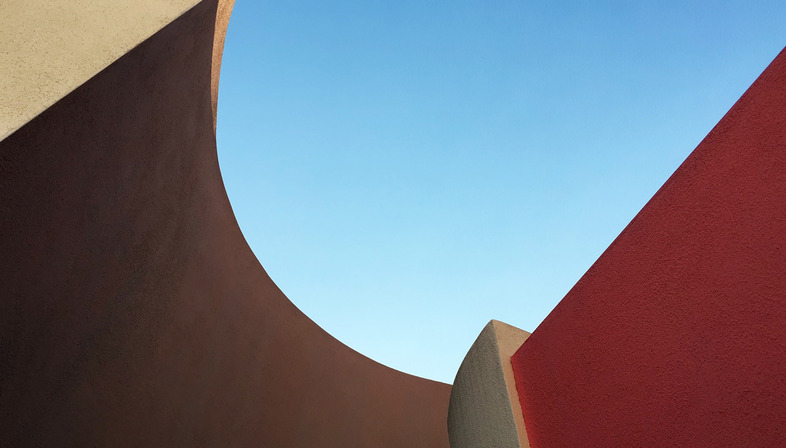
THE MAKING OF SILENT SPACES
“To me buildings can have a beautiful silence…”—Peter Zumthor
My penchant for the creation of silent spaces is reflected in the basis of my whole philosophy of making architecture. I have always believed in the words of the Argentinian poet Jorge Luis Borges “my business is to weave dreams” and that ultimately the task of the architect is to make the ordinary extraordinary.
In Paul Valery’s book, ‘Eupalinos or the architect’, the author refers to an imaginary Platonic discourse between Socrates, Phaedrus and Eupalinos, where the latter refers to buildings which are mute, some which speak and the rarer ones which sing. It has always been my aim to lyricize spaces and hopefully produce buildings which harbour the tones of a silent music. Perhaps because of my native island’s Baroque haunted nature I have been lured, in contrast, towards creating spaces of limpid silence and austerity. Yet the search is that for a silence which is not void but one which is fulfilling and pregnant, a silence of communication which cuddles, envelopes, comforts and sings. The quest is to create loci in which one can stop and pause, and where one can be silent and unspoken to. The American Indians have a name for the unstruck sound which they term ANAHATA, a silence heard. It is exactly this form of silence that I search for in my projects.
Regretfully we now live in an age where we know the price of everything and the value of nothing. All is now measured by monetary value. Silence regretfully has fallen out of fashion; it no longer has a place as a protagonist in our life style. Our secular, cacophonous and technologically oriented lifestyle precludes silence. In an age of clamour and noise silence has become an endangered species. It was Pascal who already in the 17th century predicted that “soon silence will pass into legend”. In my projects, although the search is for an architecture of silence it is also a quest for an architecture to enhance the senses, for the spaces of architecture are mood manipulative and we relate to architecture with all of our five senses. My creed is to create thresholds between reality and dream in buildings which enrich the spirit and elevate the soul. The words of playwright Tenessee Williams “I don’t want reality, I want magic” best manifest my philosophy. In my constant attempt towards the making of pastoral and idyllic arcadias, like Urlik Plesner I believe that “buildings are also homes for the soul”.
While architecture is made up of the three dimensions of length, breadth and height, and experienced by the fourth dimension of time, I am convinced that it also possesses a fifth dimension which surely must be silence. My aim remains to provide paradigms of silence carved in rhythms to calm and soothe focusing on the serene, the calm and the placid, to create loci which provide:
Silence for the body
Silence for the heart
Silence for the mind
Silence for the soul
Silence for the spirit
IN SEARCH OF SACRED SPACES
“Silence for the unmeasurable, light for the measureable”—Louis Kahn
In the making of sacred spaces silence becomes even more of an essential property. The object of contemporary sacral projects is to ensure that the congregation of the faithful is in a space free of noise and clatter; a space which harbours a silence conducive to meditation and prayer. In the creation of an architecture of sacrality the architect is evoking the unseen in the seen and attempting to elevate the materialistic to a spiritual transcendental level. No mean task, as here one is measuring against the immeasurable.
Architecture must belong to the zeitgeist of the age and adhere to its site; in other words architecture must relate to both time and space. Sacred spaces of today still remain an evolution and development of the rich heritage of the past, but they must now also interpret and accommodate present day theological and liturgical developments. The contemporary church must read as a space where sacred time and sacred space are brought together in a locus of quiescence and silence to evoke the ritual of eternal Presence. In our times, orphaned of spirituality; a time in which we relegate the sacred and elevate the secular, the task of the architect of bringing the Divine into the third millennium has become an even more arduous task. Solitude, shelter, light and silence remain essential requisites with silence perhaps being the paramount requirement. Yet the silence of a sacred space must not be a silence of emptiness and aphony, but one which provides therapeutic harmonies of sacred hierophany; a silence that has a cuddling, caring, embracing and welcoming voice.
I believe that to create successful sacred spaces one must conceive them in silence and also with love, dedication and commitment. It was Mother Teresa who reminded us that “more important than what we do, is the love that we put in the doing”. Faith is also an essential requirement. Perhaps my mentor Gio Ponti was right when he said that “Religious architecture is more a matter of faith and religion than architecture”. Science tells us how, where and when but it is only through faith that we may perhaps discover why. Silence remains a paramount requirement in today’s turbulent troubled world. Pope Francis himself insists on the necessity to “love silence, search for silence and cultivate silence”, and to quote Mother Teresa again “if you face God in prayer and silence, God will speak to you”.
The sacred monasteries and priories of Europe all conceived in prayerful silence reflected back that silence to their users, as if to demonstrate that architectural space is not only a physical entity but more so an energy filled milieu. These monastic spaces were specifically designed to be conducive to meditation and spiritual reflection, guardians of silence and solitude conceived as being promotive to reflection and prayer; loci where one’s perception of time and space is altered.
It was Louis Khan who again reminded us that “silence is the basic source for creativity”. Jonas Salk, long struggling to solve the polio puzzle deciphered it in the contemplative ambiences of an Assisi monastery. He claimed that the silence and solitude of the monastic enclave were conducive in introducing a sense of calmness which sharpened his thought process, as if to verify Mark Hope’s words that “it is in the sanctuary and the silence it provides that the bells of creativity can ring clearly”. Today neuroscience has confirmed that silence is in fact conducive to creativity.
Axel Munthe’s words, “the soul needs more space than the body” ring through in an age in which we are in dire need of spiritual comfort and solace. The silences of sacred spaces have today become more than an essential necessity in our spiritually and morally barren age. My own intentions in the making of sacred spaces of silence are best summed up in the words of C.S. Lewis “while others were building ships in their bottles, I was attempting to build a lighthouse”. The words of Chaim Potok also ring through “you can listen to silence and learn from it”, as do those of Nicholas Winding Refn “I believe silence is the greatest sound of all”.
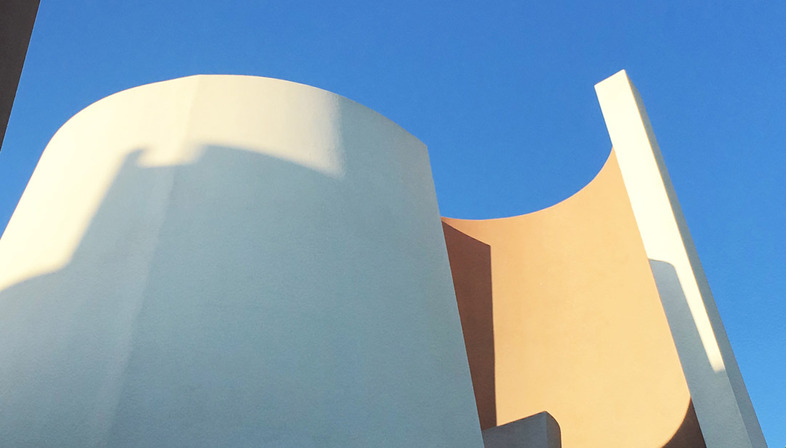
2. You quoted Bob Kaufman as one of your favorite authors in one of your interviews and, from that moment, I started to love his works very much. His poems have an extraordinary charismatic strength as was his personality. Kaufman, however, used silence as an act of rebellion and protest (he took a vow of silence and kept it for 12 years after Kennedy’s death at the end of the Vietnam War) while you, Richard, use it for very different purposes. Can you find affinities between your silence and that of the eccentric ‘black American Rimbaud’ ?
THE SILENCE OF PROTEST
“Silence is sometimes the severest criticism”—Charles Buxton
The silences covered in the previous paragraphs relate to augmenting the absence of sound in order to provide solace and rest from the clamour of contemporary noise. This remains without a shadow of doubt the most positive and rewarding aspect of silence. There is however another side of silence, that of when it is utilised as a means to demonstrate disapproval; Silence used as a form of non-violent protest. Major examples of silent protest include the 1968 Mexico Olympic Games incident when two winning black athletes raised their hands on the medal podium, and perhaps the largest silent non-violent protest was the 1963 march on Washington which ended with Martin Luther King’s iconic speech ‘I have a dream’.
One of the most powerful and longest personal silent protests was that carried out by the black Beat poet Bob Kaufman. He undertook a ten year vow of silence after the assassination of President Kennedy in 1963. As a practising Buddhist he also undertook a second period of silence in 1978. Kaufman was a Californian African American Beat generation poet born in 1925. His works focused on jazz and social protests, all expressed in a language powerful, acidic and satirical, yet hauntingly lyrical and beautiful. He belonged to a group which included Ginsberg, Ferlinghetti, Kerouac and Corso, but in contrast he was primarily an oral poet with verses emphasising words between long pauses of silence, all of which recalled the rhythm of the musical sound beats of jazz. One of his poems particularly focuses on the sound-silence relationship “the silent beat makes the drum-beat. It makes the drum, it makes the beat, without it there is no drum. It is not the beat by who is beating the drum, his is a noisy loud one. The silent beat is beaten by who is not beating the drum, his silent beat drums out all the noise, it comes before and after every beat, you hear it in between, its sound is… ”, Bob Kaufman poet.
Kaufman’s preoccupation with silence is summed up in his statement “my ambition is to be completely forgotten” reflecting his desire for the ultimate silence of oblivion. His vow of silence and refusal of speech may well be read as the strongest of protests; a form of speech emanating from speechlessness; a potent peaceful outcry manifested in silence, as if to confirm Jeff Thrussell’s words “When silence is used as a weapon it can wound even more than words”. In his poem ‘The silent beat’ Kaufman tags himself as the “sound of the silent beat”. Written years before, it pre-empted his ten years of silence. His poetry consisted mostly of pleas for silence and justice, defiant, but not defensive. Perhaps the highest tribute to this poet, not yet elected to the echelons of poetic literature came from his wife, “each time Bob speaks it is a gem in the crown of oratory”.










